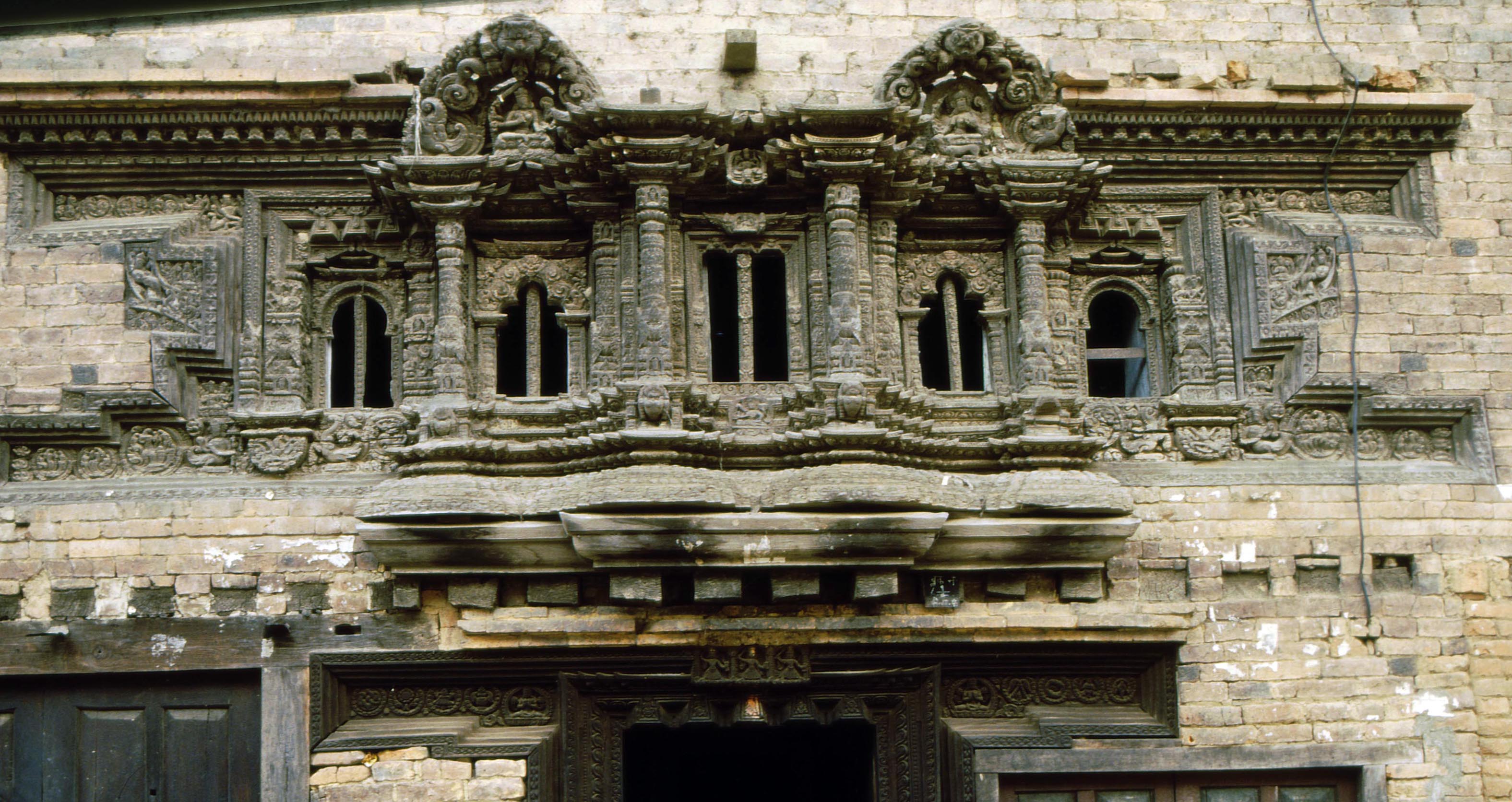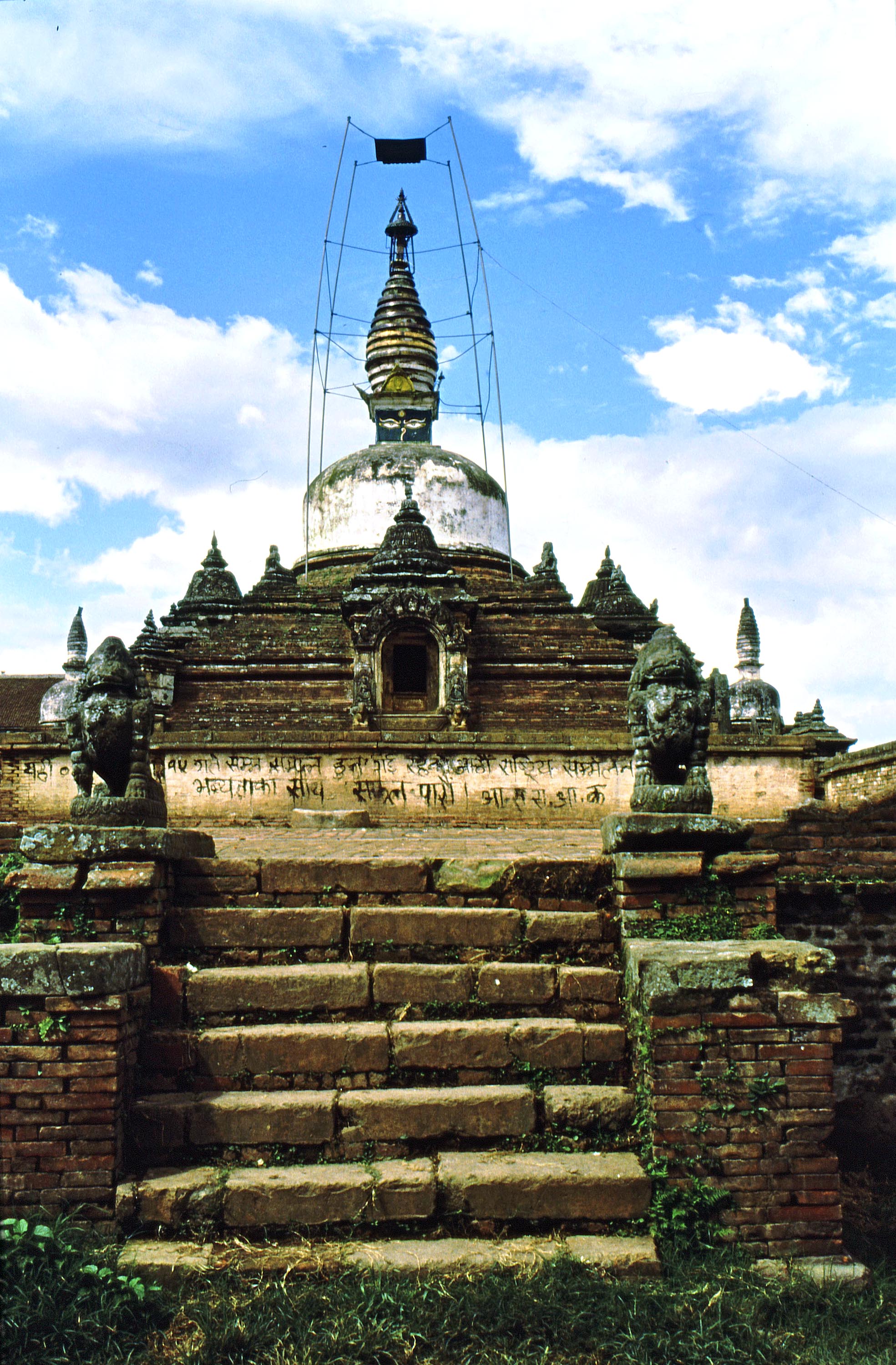|
 KIRTIPUR: an Urban Community in Nepal - KIRTIPUR: an Urban Community in Nepal -
its People, Town Planning, Architecture and Arts
Contributors: Marc Barani, Padam B. Chhetri, Robin Lal Chitrakar, Chris Miers, Shankar M. Pradhan, Gauri Nath Rimal, Ramendra Raj Sharma, Mehrdad Shokoohy, Natalie H. Shokoohy, Sukra Sagar Shrestha, Uttam Sagar Shrestha, Sudarshan Raj Tiwari
Edited by Mehrdad Shokoohy and Natalie H. Shokoohy London, Publication date 1994 258 pp. 150 monochrome plates, 17 maps, 38 architectural drawings, 18 inscriptions, 10 graphs and tables, glossary, bibliography, index. Reprinted on glossy Art Paper with enhanced images.
ISBN: 978-1-870606-02-8 Hardback
PRICE: £43.00 plus p&p US$58.00 plus p&p
SPECIAL OFFER: £10.00 plus p&p; US$14.00 plus p&p if ordered directly from Araxus together with Street Shrines of Kirtipur
In conjunction with the launch of Street Shines of Kirtipur, Nepal: as long as the sun and moon endure we are offering this earlier publication at a special discount for a limited period.
 “A lovelier spot than this the heart of man could scarce desire” “A lovelier spot than this the heart of man could scarce desire” The Kathmandu Valley in Nepal was thus described by Sir Henry Montgomery Lawrence (1806-1857), the British Resident in the mid-19th century. Kirtipur is the fourth largest town of the Kathmandu Valley and an early description of the town appears in Ambrose Oldfield’s 1880 account: “Kirtipur in the early history of Nepal was the capital of a small independent principality, but it was afterwards annexed to Patan. It stands in a commanding position upon the level crest of one of the low rounded hills … and overlooks the city of Kathmandu on the north and that of Patan towards the east… Kirtipur has never been an extensive city but its almost impregnable position gave it an importance disproportionate to its size”.
The town has a complex social structure, unified by ethnic and cultural bonds, but diverse in the hierarchy of its social groups. Until recently it preserved its rural society in close proximity to Kathmandu and Patan, which are becoming increasingly metropolitan. Kirtipur is inhabited by Newars, the most ancient population group of the Valley, known for their artistic skills and responsible for the much admired architectural forms which have produced the townscapes of the Kathmandu Valley. Kirtipur itself has preserved many elegant old houses and a number of important religious Buddhist and Hindu buildings.
Bagh Bhairav Temple, the main Hindu temple of Kirtipur
 Traditional houses at De Pukhu, in the centre of the town Traditional houses at De Pukhu, in the centre of the town
An international team of experts, many from Nepal and some from Kirtipur present detailed studies covering a wide range of subjects concerned with the town and its people. The book remains a main source on this historic town, and was instrumental in putting it on the map both for outsiders and residents.
 CONTENTS: CONTENTS:
Mehrdad Shokoohy: Introduction
Gauri Nath Rimal: Private and public involvement in conservation policy development
Mehrdad Shokoohy: History
Mehrdad Shokoohy: The Newars, the people of Kirtipur
Sukra Sagar Shrestha: Social life and festivals
Mehrdad Shokoohy: Urban fabric
Chris Miers: The Newari house
Ramendra Raj Sharma: Traditional houses of Kirtipur, their types and building materials
Marc Barani: The residential unit – symbolic organisation
 Sukra Sagar Shrestha: Historic public buildings Sukra Sagar Shrestha: Historic public buildings
Sudarshan Raj Tiwari: Tiered temples of Kirtipur, a study of their form and proportion
Natalie H. Shokoohy: Buddhist monasteries
Padam B. Chhetri: Kathmandu Valley Land Use Plan and Kirtipur
Shankar M. Pradhan: Land use and population survey Uttam Sagar Shrestha: Land use changes in Kirtipur Uttam Sagar Shrestha: Road transport and communications Robin Lal Chitrakar: Water supply and sanitation Mehrdad Shokoohy: Tourism and its effects on Kirtipur Sukra Sagar Shrestha: Art and antiquities
Appendices: Appendix A; Inscriptions of Kirtipur.
Appendix B; National Museum, Kathmandu, images from Chilancho Vihar Appendix C; National Museum, Kathmandu, objects from Mul Bhagvansthan, Chilancho Mahavihar
Glossary Bibliography Index Chilanco stupa, one of the oldest stupas in Nepal
|




